Glacier Bay
Today, Glacier Bay, in another time. The University of Houston's College of Engineering presents this series about the machines that make our civilization run and about the people whose ingenuity created them.
"The Discovery of Glacier Bay" is an article in my 1895 Century Magazine. It's subtitled, "by its discoverer". The author is the great naturalist, John Muir. Well, Muir was an important explorer of the Bay. But discoverer? The Tlingit people had lived there for centuries. Vitus Bering, of the Bering Sea, was there in 1741. Later, Joseph Whidbey, after whom Whidbey Island is named, claimed Glacier Bay for England. Others as well. Still, Muir was first to map it with a scientist's eye. So I won't complain.
Late in October, 1879, Muir reached the mission at Fort Wrangel, Alaska. Then he decided to venture north along what's now the Alaska panhandle. He enlisted a Stickeen nobleman, a Chilcot canoe builder, and the young missionary to join him. They found Glacier Bay a hundred miles due northwest of them. But their torturous journey would cover 800 miles before they were done.
The canoe builder's wife wept bitterly as they left -- said that if other Indians didn't kill them, the snow and ice would. Making that trip in late autumn might sound crazy until we realize that the south Alaska coast is warmed by the Alaska Current.
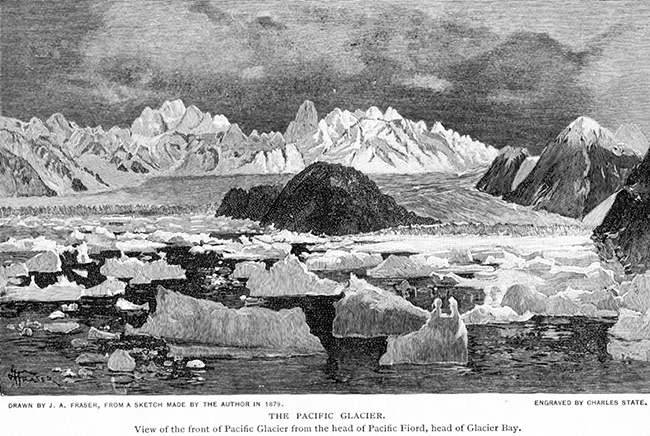
Muir's sketch of Pacific Glacier. That Glacier no longer exists, having melted away completely.
Once in Glacier Bay, Muir describes that inland watershed, hike by hike, glacier by glacier. The basin branches off from Icy Strait into several glaciers, which Muir mapped. His on-site sketches have been rendered into steel engravings for the article. And here my antennae rise. For I too visited Glacier Bay -- one of thousands who see it every year from cruise ships.
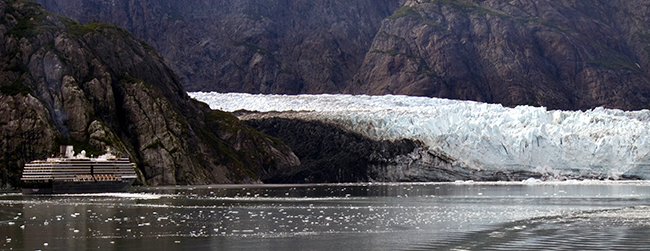
A huge cruise ship is dwarfed by a glacier, despite being in the foreground.
And I did not see what Muir saw. Take the view of the glacier named after Muir, from nearby Mt. Wright. We too saw that glacier, but only after our ship had sailed 26 miles beyond Muir's viewpoint. The ice has retreated that far.
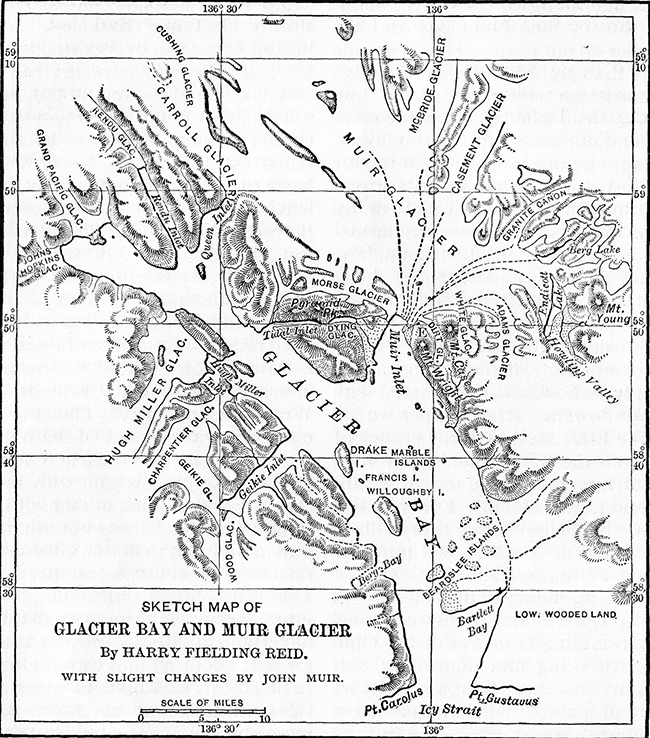
Glacier Bay in Muir's time.
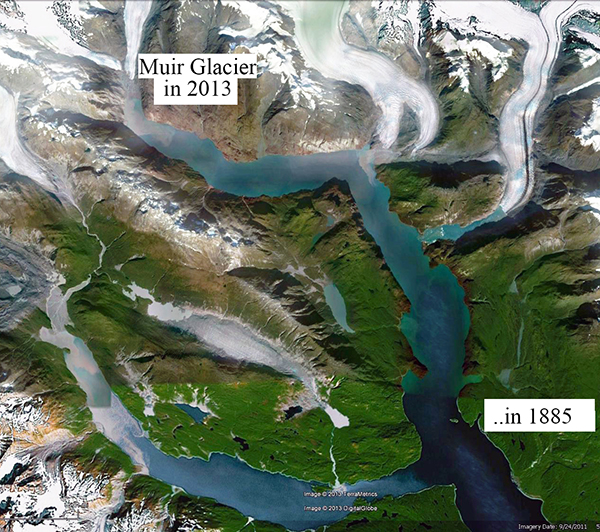
Detail of Muir Glacier ca. 2013 (compare this with the Muir Glacier portion of the map above.)
But Muir also saw a retreating glacier. He tells of the great blocks of ice falling off the front wall of the glaciers. Even more dramatic, he described icebergs breaking off from the wall below the water and erupting as they breach the surface. He said of the glaciers, "Notwithstanding their great size - they are in the first stage of decadence ... "
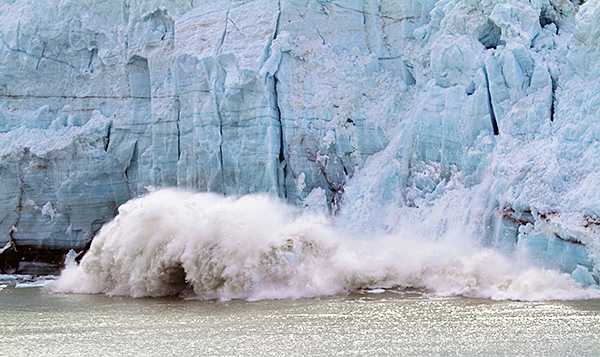
Ice breaking away from a glacier (or "calving"). This is much larger than it looks from a mile away. The glacier face is hundreds of feet high and the sound is powerful.
The glaciers were breaking away faster than they were forming, even then. But that was only the beginning. By far, most of Muir Glacier's retreat has taken place in the last seventy years. As Earth warms, the glaciers fade. We might well be the last generation with any first-hand inkling of what Muir meant when he wrote of the glaciers shedding ice bergs at night,
.. the long range of ice-bluffs, faintly illumined ... unearthly splendor, luminous foam dashing against it ... this wild, auroral splendor ... some huge new-born berg dashes the living water into a yet brighter foam, and the streaming torrents pouring from its sides are ... robes of light ...
Well, what other language could Muir have used for the surreal world he'd found in that remote pocket of Alaska.
I'm John Lienhard at the University of Houston, where we're interested in the way inventive minds work.
J. Muir, The Discovery of Glacier Bay, by its discoverer. Century Magazine, Vol. L, No. 2, June, 1985, pp. 234-247. All black and white drawings are from this source. All glacier photos are by John Lienhard. The two satellite views are courtesy of Google Earth.
This episode was first aired on May 3, 2013
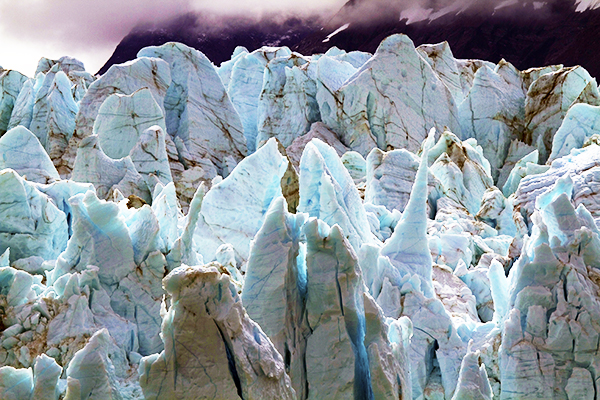
The ice stands in jagged shards on the top of a glacier.
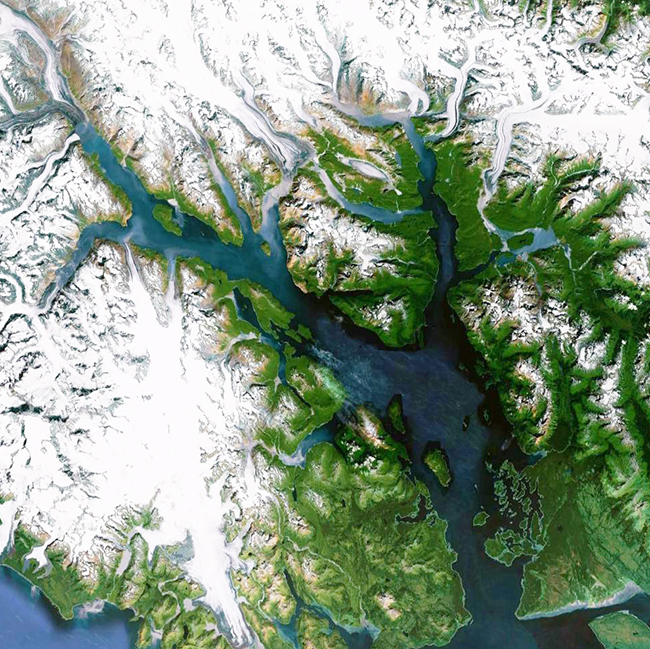
This Google Earth view of the Glacier Bay basin roughly matches the Muir drawing above.

Muir's sketch of Muir Glacier.
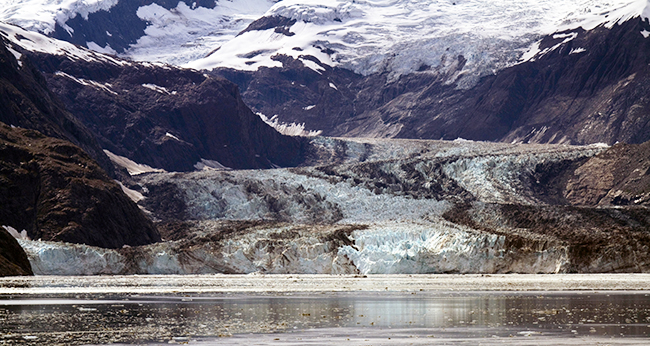
Muir Glacier in 2011.
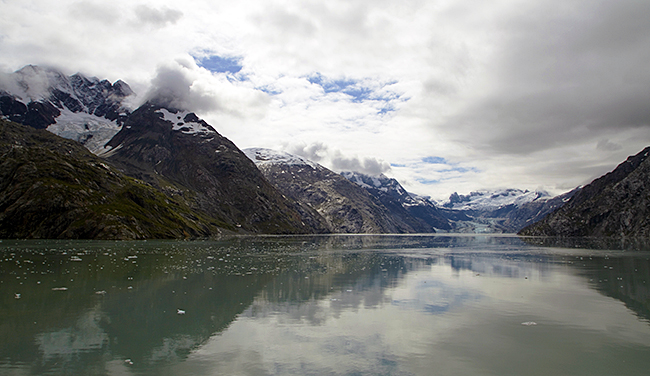
Muir Glacier viewed from a distance, having retreated far up its fjord.